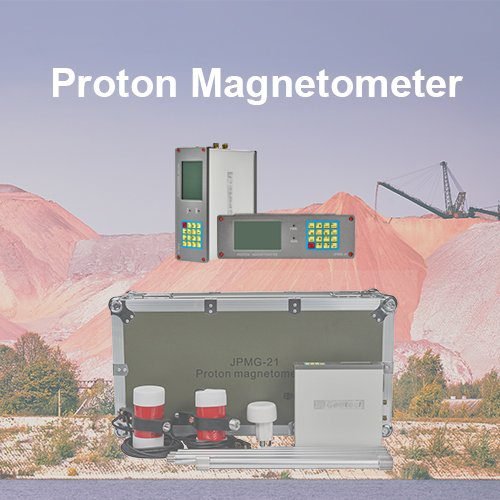Welcome to Geotech!

What is Geomagnetic Survey?
Introduction
Geomagnetic surveying is a crucial geophysical exploration technique used to detect local variations in the Earth’s magnetic field to identify subsurface geological structures, mineral deposits, and other anomalies. As technology advances, geomagnetic survey equipment and methods continue to improve, offering more efficient and precise solutions for mineral exploration, archaeological surveys, environmental monitoring, and engineering site investigations.
Definition and Principles of Geomagnetic Surveying
Definition
Geomagnetic surveying is a geophysical method that measures variations in the Earth’s magnetic field to identify subsurface geological anomalies. These anomalies are typically caused by magnetic minerals in the Earth’s crust, such as magnetite and hematite.
Principles
Geomagnetic surveying is based on the interaction between the Earth’s magnetic field and subsurface rocks and minerals. Magnetic minerals become magnetized in the Earth’s magnetic field, causing local variations in the magnetic field. These variations, known as “magnetic anomalies,” can be detected and analyzed to infer the distribution of subsurface geological structures and mineral bodies.
Methods and Equipment for Geomagnetic Surveying
Main Methods
- Total Field Measurement: Measures the total intensity of the Earth’s magnetic field.
- Vector Measurement: Measures individual components of the Earth’s magnetic field (e.g., X, Y, Z directions).
- Gradient Measurement: Measures the rate of change of the magnetic field intensity to identify shallow anomalies.
Common Equipment
- Proton Magnetometer: Uses the nuclear magnetic resonance principle of hydrogen protons to measure magnetic field intensity. It offers high sensitivity and stability, making it suitable for various geological conditions.
- High-Sensitivity Magnetometer: Employs advanced sensor technology to provide higher measurement precision.
- Portable Magnetic Gradiometer: Measures magnetic field gradients and is ideal for rapid field measurements.
- OCXO Magnetometer: Features a temperature-compensated high-stability oscillator to ensure accurate measurement results.
Application Fields of Geomagnetic Surveying
Mineral Exploration
Geomagnetic surveying is widely used in the exploration of metallic minerals such as iron, copper, and zinc. By detecting magnetic anomalies, it helps delineate orebody boundaries and guide drilling operations.
Archaeological Surveys
In archaeology, geomagnetic surveying is used to identify ancient sites and building foundations. This non-invasive method helps protect artifacts while providing high-precision geological information.
Environmental Monitoring
Geomagnetic surveying can detect underground pipelines, cables, and other infrastructure, aiding in environmental assessments and disaster prevention.
Engineering Site Investigations
In engineering site investigations, geomagnetic surveying identifies subsurface hidden structures such as ancient tunnels and landfill sites, ensuring project safety.
Case Studies
Case Study 1: Iron Ore Exploration
In the Olary Iron Project in South Australia, the JPMG Proton Magnetometer successfully detected 12 distinct mineralized zones and three previously unknown fault lines. Compared to traditional proton magnetometers, the survey cycle was reduced by 22%, significantly improving exploration efficiency.
Case Study 2: Archaeological Discovery
In Brazil, an archaeological team used the walking mode of the JPMG Proton Magnetometer to collect data, successfully mapping a 12th-century settlement pattern and detecting buried artifacts at a depth of 2.3 meters.
Comparison with Other Geophysical Methods
Comparison with Electrical Exploration
- Electrical Exploration: Identifies geological structures by measuring electrical property differences in subsurface rocks. Suitable for detecting groundwater, faults, and voids.
- Geomagnetic Surveying: Sensitive to ferromagnetic targets, making it ideal for mineral exploration and archaeological surveys.
Comparison with Seismic Exploration
- Seismic Exploration: Identifies geological structures by measuring the propagation speed and reflection characteristics of seismic waves. Suitable for determining bedrock interfaces and landslide surveys.
- Geomagnetic Surveying: Non-contact measurement suitable for rapid large-area scanning.
Technical Development Trends
High-Resolution Trend
As exploration targets become weaker, the sensitivity and resolution of magnetometers continue to improve. The 0.05nT sensitivity of the JPMG Proton Magnetometer makes it excel in detecting weak magnetic anomalies.
Intelligent Identification Trend
Combining artificial intelligence technology, the automatic identification and prediction of magnetic anomalies are becoming a future development direction. The JPMG supports real-time data visualization and intelligent synchronization, enhancing measurement efficiency.
Multi-Dimensional Data Integration
The integration of geomagnetic surveying with electrical and seismic methods forms a multi-dimensional data integration exploration system. The JPMG supports multiple data output formats, facilitating integration with other geophysical methods.
Reasons to Choose the JPMG Proton Magnetometer
High-Precision Measurement
The JPMG Proton Magnetometer offers 0.05nT sensitivity and ±0.1nT absolute accuracy, ensuring reliable measurement results.
Multi-Scenario Adaptability
Supports three operational modes (mobile, walking, and base station), adapting to various measurement needs from rapid mobile surveys to long-term static measurements.
Intelligent Synchronization and Data Processing
30μs GNSS time synchronization and integrated professional software ensure data time consistency and processing accuracy.
Military-Grade Protection
IP67-rated aluminum housing and a working temperature range of -40°C to 55°C ensure stability and reliability in extreme environments.
Conclusion
As an important geophysical exploration technique, geomagnetic surveying has broad applications in mineral exploration, archaeological surveys, environmental monitoring, and engineering site investigations. The JPMG Proton Magnetometer, with its high precision, multi-scenario adaptability, and intelligent data processing capabilities, is an ideal choice for geomagnetic surveying. With continuous technological advancements, geomagnetic surveying will play an increasingly significant role in a wider range of fields.
Future Outlook
With the development of AI, unmanned operations, and intelligent sensing technologies, geomagnetic survey equipment will further evolve into platform-based and intelligent systems. The JPMG Proton Magnetometer will continue to lead the development of the geological exploration industry, providing users with efficient and precise exploration solutions.
-1.png)



